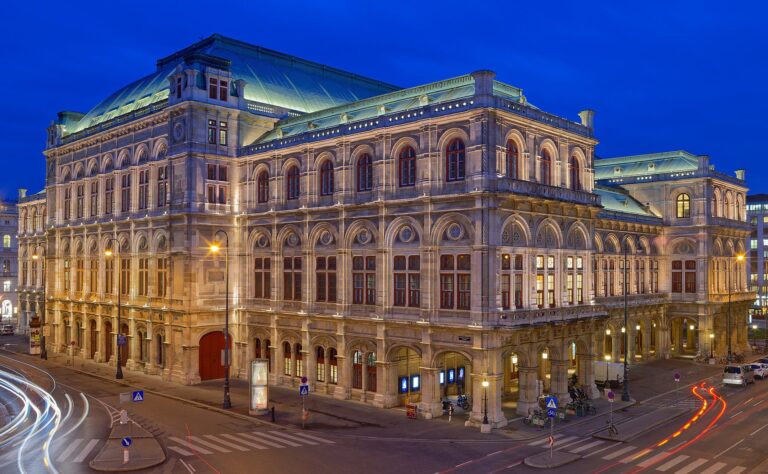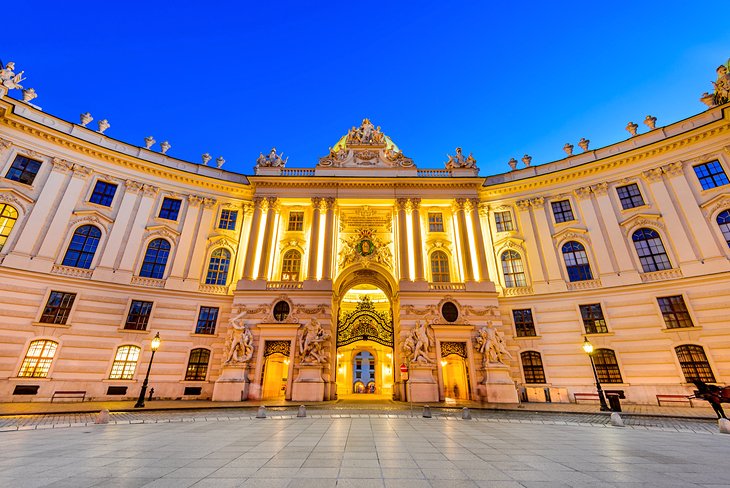General Information
Hamburg, the second-largest city in Germany, is a vibrant port city known for its maritime heritage, eclectic architecture, and thriving cultural scene. Often referred to as the “Gateway to the World” because of its major seaport, Hamburg is a dynamic city that combines modern innovation with a rich history. It is a city of contrasts, where sleek, contemporary buildings sit alongside historic warehouses and centuries-old churches. Hamburg is famous for its beautiful canals, lively music scene, and unique neighborhoods, making it an ideal destination for tourists seeking a mix of culture, history, and modern attractions. The Hamburg Harbour is one of the busiest in Europe, and the city’s bustling waterfront plays a central role in its economy and charm.
Location
Hamburg is located in the northern part of Germany, about 100 kilometers (62 miles) from the North Sea. It sits along the Elbe River, which has been integral to its development as a major trade and shipping hub. The city is surrounded by picturesque lakes and parks, offering a blend of urban and natural landscapes. Hamburg is well-connected to other major German cities, with easy access to Copenhagen, Amsterdam, and the rest of Northern Europe.
How to Get There
- By Air: Hamburg Airport (HAM) is the city’s main international airport, located about 10 kilometers (6 miles) north of the city center. It connects Hamburg to major cities across Europe and beyond. From the airport, you can easily reach the city center by S-Bahn (suburban train), bus, or taxi.
- By Train: Hamburg has a central train station, Hamburg Hauptbahnhof, which is well connected to other German cities and Europe. High-speed trains such as ICE (InterCity Express) connect Hamburg to cities like Berlin, Cologne, and Munich. The Railjet also offers fast connections to Vienna and Zurich.
- By Bus: Several international and domestic bus lines, including FlixBus, run services to Hamburg. Most buses arrive at the ZOB Hamburg (Central Bus Station), located near the city center.
- By Car: Hamburg is easily accessible by car via the A1, A7, and A24 highways, which connect it to cities across Germany and Northern Europe. If driving within the city, note that Hamburg has a well-maintained road network, but traffic can be heavy during rush hours.
Best Time to Visit
- Spring (April to June): Spring offers mild temperatures (around 10°C to 20°C) and fewer tourists. It’s a great time to explore the city’s parks and waterfronts, such as Planten un Blomen park, and enjoy the outdoor festivals that begin to bloom during this time.
- Summer (July to August): Summer is the peak tourist season in Hamburg, with temperatures ranging from 18°C to 25°C. The city is full of outdoor activities, music festivals, and events, and many people gather at the Alster Lakes for boating or picnics. Be prepared for higher prices and larger crowds.
- Fall (September to November): Fall in Hamburg is cooler (10°C to 20°C) and less crowded. The autumn colors around the parks and Alster Lake are a highlight. This season offers a more relaxed atmosphere, with great opportunities to experience local food festivals and seasonal events.
- Winter (December to February): Winter temperatures can drop to around 0°C to 5°C. While it’s colder, this is the time to enjoy Hamburg’s Christmas Markets and cozy cafés. The city is especially beautiful with winter lights and festive decorations.
Where to Stay
- Luxury: The Fairmont Hotel Vier Jahreszeiten is a historic and luxurious hotel with a prime location on the Inner Alster Lake, offering stunning views and top-tier amenities. Hotel Atlantic Kempinski is another 5-star option, known for its classic charm and proximity to the city’s main attractions.
- Mid-range: 25hours Hotel HafenCity is a trendy, maritime-themed hotel located near the Harbor. For those looking for something modern and stylish, Motel One Hamburg-Alster offers affordable luxury and is centrally located.
- Budget: Generator Hamburg is a popular and affordable hostel with great facilities and a social atmosphere, ideal for backpackers. The A&O Hostel Hamburg offers cheap and convenient accommodations in the St. Pauli district.
- Unique: For a quirky experience, stay on a houseboat in the Harbor or opt for East Hotel, which features contemporary design in an industrial-chic setting.
Top Attractions
- Miniatur Wunderland: The largest model railway exhibition in the world, Miniatur Wunderland features highly detailed miniature models of cities, landscapes, and iconic landmarks, making it an exciting attraction for all ages.
- Hamburg Harbor & Port Tour: The harbor is the heart of the city, and a boat tour offers a fascinating view of its docks, warehouses, and ships. Landungsbrücken is the departure point for many harbor tours.
- Speicherstadt: A UNESCO World Heritage site, Speicherstadt is the largest warehouse district in the world, with its distinctive red-brick buildings and canals. It’s a great place to walk around and take in the charming architecture.
- St. Michael’s Church (Michel): One of the most iconic landmarks in Hamburg, St. Michael’s Church offers panoramic views of the city from its tower and is a beautiful example of baroque architecture.
- Reeperbahn: Known as Hamburg’s red-light district, the Reeperbahn is also famous for its vibrant nightlife, live music venues, theaters, and clubs. It’s a hub for party-goers and a must-see for those wanting to experience Hamburg’s electric vibe.
- Alster Lakes: The beautiful Inner and Outer Alster Lakes offer plenty of opportunities for boating, cycling, and walking. The Alsterarkaden along the lake is perfect for shopping or enjoying a coffee by the water.
- Elbphilharmonie: An architectural marvel, the Elbphilharmonie is a concert hall built atop a historic warehouse. It offers stunning views of the city and the harbor from its public viewing platform, as well as world-class musical performances.
- Hamburg’s Art Museums: The Kunsthalle Hamburg and Deichtorhallen are two of the city’s most important art museums, showcasing both contemporary and classic art.
Getting Around
- Public Transport: Hamburg’s U-Bahn (subway), S-Bahn (commuter trains), trams, and buses are extensive, efficient, and easy to navigate. The Hamburg Card offers unlimited travel on public transport, as well as discounts on various attractions.
- Taxis and Ride-Sharing: Taxis are widely available, and Uber also operates in Hamburg. Ride-sharing options such as Bolt are also popular in the city.
- Biking: Hamburg is a bike-friendly city, and renting a bike is an excellent way to explore the many parks, canals, and lakes. The city offers Call-a-Bike and Lime bike-sharing services.
- Walking: Many of Hamburg’s attractions are within walking distance, especially in the city center. The pedestrian-friendly streets around the Altstadt (Old Town) and St. Pauli district are perfect for strolling.
Local Cuisine
- Franzbrötchen: A local pastry, Franzbrötchen is a cinnamon roll that’s a must-try when in Hamburg, best enjoyed with a cup of coffee.
- Fischbrötchen: Hamburg is famous for its seafood, and the Fischbrötchen (fish sandwich) is a local delicacy, often made with herring, salmon, or other fresh fish, and served with pickles and onions.
- Labskaus: A traditional Hamburg dish, Labskaus is a hearty meal made from corned beef, potatoes, onions, and beetroot, often served with a fried egg and pickles.
- Pannfisch: Another popular dish is Pannfisch, a fried fish dish, typically served with potatoes and mustard sauce.
Restaurants to visit include Fischereihafen Restaurant (for traditional seafood), Die Bank (for modern German cuisine), and Tschebull (for regional specialties).
Shopping
- Mönckebergstraße: This bustling street is Hamburg’s primary shopping avenue, offering a wide range of shops, from international brands to department stores like Europa Passage.
- Neuer Wall: For high-end luxury shopping, Neuer Wall is the place to go, home to stores like Gucci, Louis Vuitton, and Chanel.
- St. Pauli District: Known for its alternative and indie shops, this district is perfect for finding unique clothing, art, and quirky souvenirs.
- Alsterhaus: A luxury department store offering fashion, beauty products, and high-end accessories.
Nightlife
- Reeperbahn: Hamburg’s most famous nightlife district is filled with bars, clubs, and live music venues. Visit places like Molotow, Gruenspan, or The Beatles Club for an unforgettable night out.
- Kiez: The St. Pauli district, or “Kiez,” is filled with pubs, clubs, and music venues, offering something for every taste, from rock to techno.
- Skybar at the Atlantic Hotel: For a sophisticated night out, the Skybar offers incredible views over Hamburg with cocktails and a chic atmosphere.
- Uebel & Gefährlich: One of the best clubs in Hamburg, Uebel & Gefährlich is located in a former WWII bunker and hosts amazing techno and electronic music nights.



